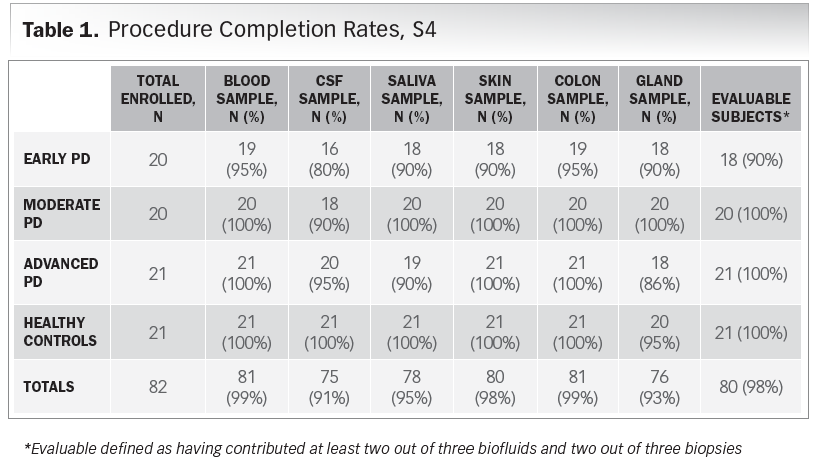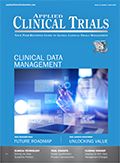The Importance of Site Selection
Applied Clinical Trials
Case study focused on quest for potential Parkinson’s biomarker highlights opportunities and challenges in site selection.
A case study focused on the quest for a potential Parkinson’s biomarker highlights the opportunities and challenges in site selection

The Michael J. Fox Foundation for Parkinson’s Research (MJFF) aims to speed clinical research by removing obstacles that stand in the way of drug development. In pursuit of this mission, the Foundation gathers insights from a wide range of stakeholders and uses these perspectives to enhance clinical trial processes from start to finish. In
Applied Clinical Trials'
Eye on Patient Advocacy series, we will share best practices and lessons learned from the field of Parkinson’s research that can be applied to clinical trials across disease states. In our sixth column in this series, we explore the importance of site selection for study success.
Background
The Systemic Synuclein Sampling Study (S4) was a multicenter, cross-sectional, observational study sponsored by The Michael J. Fox Foundation for Parkinson’s Research. The primary objective of the study was to better understand the progression of Parkinson’s disease (PD) by identifying the optimal biofluids and tissues for measuring the protein alpha-synuclein outside of the brain as a potential biomarker in individuals with PD. The secondary objective of the study was to create standard operating procedures for the collection and assessment of multiple tissues and biofluids to better understand alpha-synuclein’s potential as a biomarker for PD.
Study design
Participants
S4 sought to enroll 80 participants meeting the following characteristics (with target enrollment of 20 participants in each category) :
- Individuals with early PD not requiring dopamine replacement therapy.
- Individuals with moderate PD on dopamine replacement therapy without motor fluctuations
- Individuals with advanced PD with motor fluctuations.
- Controls.
Procedures
The following section provides a condensed overview of the procedures that study participants underwent as part of S4. For additional information on the procedures and scientific rationale used in the study, please refer to the S4 peer-reviewed publications listed at the end of this article.
Screening visit
- Study staff informed and consented study participants for participation (i.e., study purpose, procedures, potential risks, and benefits were explained, and consent to participate was obtained). Their medical and family histories and any medications were reviewed. Participants’ vital signs were taken, and a general physical and neurological exam were performed. All participants completed MDS-Unified Parkinson’s Disease Rating Scale (MDS-UPDRS), Hoehn and Yahr scale (H&Y), Montreal Cognitive Assessment (MoCA), Scales for Outcomes in Parkinson’s Disease.
- Autonomic Dysfunction (SCOPA-AUT) and University of Pennsylvania Smell Identification Test (UPSIT). Individuals with PD received Modified Schwab & England Activities of Daily Living Scale and PD stage assignment.
Biofluid collection and skin biopsy visit
- Whole blood, serum, and plasma were collected through routine venipuncture.
- Cerebrospinal fluid was collected through lumbar puncture under local anesthesia.
- Saliva was collected through 20-minute active drool collection.
- Approximately four samples of thigh and upper back/shoulder skin were biopsied using skin punch under local anesthesia.
Colon biopsy visit
- Approximately eight samples of colonic tissue were biopsied from study participants using routine clinical procedures.
Submandibular gland biopsy visit
- Approximately five samples of submandibular (type of salivary) gland tissue were biopsied using a 16-gauge needle inserted through the neck under local anesthesia.
Site selection
The number and type of procedures, as well as the variation in recruitment target population, made the S4 research protocol highly complex. The S4 Steering Committee was aware that this was a potential barrier to successful study implementation and determined that careful selection of sites would help to mitigate this issue. To enhance the site-selection process, the S4 Steering Committee: 1) identified and prioritized site-level characteristics necessary for study implementation; 2) developed a checklist to evaluate sites in person; and 3) conducted in-person site visits.
Identified and prioritized site-level characteristics
The characteristics identified by the S4 team as most critical to study implementation were:
- Site personnel experience in implementing clinical studies that involve collecting biospecimens.
- Site-level infrastructure.
- Access to the population(s) of interest.
Each of these characteristics addressed an area of complexity in the research protocol. Experienced site personnel provided additional confidence around the ability to conduct study procedures that were both precise and invasive. Strong site infrastructure ensured that samples were collected in a standardized manner and mitigated concerns around data quality. Access to the population(s) of interest ensured greater success in recruitment and reduced trial delays. This information was assessed by asking invited clinical sites to complete a site interest form. The forms were then evaluated and prioritized by the S4 Steering Committee.
Developed an evaluation checklist
The S4 Steering Committee created a checklist that was broken out by the three priority characteristics (experience, site-level infrastructure, and access to the population of interest). Within these categories, specific criteria were listed that provided a measure of how well the site ranked on that characteristic (level of experience, type of equipment, access to storage, etc.).
Conducted in-person site visits
S4 Steering Committee members visited each of the sites under consideration based on their responses to the site interest form and, using the checklist, evaluated them on the priority characteristics. Sites were selected to participate in the S4 study if they adequately met the criteria for participation, including documented experience collecting biospecimens from a PD population, site infrastructure requirements (such as collaborations with gastroenterologists and ear nose and throat specialists), and recruitment plans for the population of interest.
Results
S4 was able to recruit its full target population in a timely manner: 82 individuals were recruited to participate in S4 within 21 months (see Table 1). Although recruitment for the trial took three months longer than originally projected, the S4 Steering Committee considered this to be successful, particularly taking into account the harder-to-reach target population and complex protocol.
Click to enlarge.

Conclusion
While a comprehensive site-selection process may require a significant investment of time and resources at the outset, the benefits may outweigh the long-term risks (e.g., study delays, additional financial resources, high attrition rates, inability to meet enrollment goals).1 Developing a checklist such as the one used by the S4 Steering Committee can facilitate the site-selection process and lead to more open lines of communication between study sponsors and sites. Sites have an opportunity to share their interest, background, and experience, and sponsors can dig deeper into questions they may have about the ways which the protocol and operating objectives align.1
To learn more about the S4 study, see the following peer-reviewed publications:
Chahine LM, Beach TG, Seedorff N, et al. Feasibility and Safety of Multicenter Tissue and Biofluid Sampling for a-Synuclein in Parkinson’s Disease: The Systemic Synuclein Sampling Study (S4). Journal of Parkinson’s Disease, in press. 2018
Beach TG, Serrano GE, Kremer T, et al. Systemic Synuclein Sampling Study (S4). Immunohistochemical Method and Histopathology Judging for the Systemic Synuclein Sampling Study (S4). J Neuropathol Exp Neurol. 2018 Aug 13. doi: 10.1093/jnen/nly056.
Visanji NP, Mollenhauer B, Beach TG, et al. Systemic Synuclein Sampling Study (S4). The Systemic Synuclein Sampling Study: toward a biomarker for Parkinson’s disease. Biomarkers in Medicine. 2017;11(4):359-368.
Reference
- Beth Harper and David Zuckerman. “Critical Success Factors for Planning for Site Selection and Patient Recruitment Planning.” BioExecutive International (2006).
The MJFF Research Engagement Team includes James Gibaldi, MS, Associate Director; Tara Hastings, Senior Associate Director; Catherine M. Kopil, PhD, Director; Bernadette Siddiqi, MA, Associate Director; and Michelle Whitham, Research Partnerships Officer; all at The Michael J. Fox Foundation in New York, NY. To contact the MJFF Research Engagement Team, email: trialsupport@michaeljfox.org
MJFF would like to acknowledge the following individuals for their contribution to the research presented in this case study: Lana Chahine, MD (Co-PI), Sherri Mosovsky, Brit Mollenhauer, MD, PhD (Co-PI), Danna Jennings, MD (ex oficio), John Seibyl, MD, Vanessa Arnedo, Lindsey Riley, Kuldip Dave, PhD,Tatiana Foroud, PhD, Thomas Beach, MD, Charles Adler, MD, PhD, Chris Coffey, PhD, Dixie Ecklund, RN and the Systemic Synuclein Sampling Study (S4); and Sarah Berk, MPH.

Improving Relationships and Diversifying the Site Selection Process
April 17th 2025In this episode of the Applied Clinical Trials Podcast, Liz Beatty, co-founder and chief strategy officer, Inato, discusses a number of topics around site engagement including community-based sites, the role of technology in improving site/sponsor relationships, how increased operational costs are impacting the industry, and more.
Funding Cuts Threaten Diversity in Clinical Research
June 27th 2025In this video interview, Kyle McAllister, co-founder, CEO, Trially, discusses how recent federal funding cuts are likely to undermine research focused on underrepresented populations, and why long-term investment in community-based studies is essential to closing persistent health equity gaps.
Reaching Diverse Patient Populations With Personalized Treatment Methods
January 20th 2025Daejin Abidoye, head of solid tumors, oncology development, AbbVie, discusses a number of topics around diversity in clinical research including industry’s greatest challenges in reaching diverse patient populations, personalized treatment methods, recruitment strategies, and more.